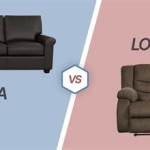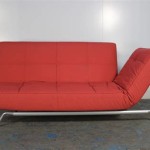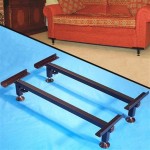Can't Fit Sofa Through Door?
Moving a sofa can be a surprisingly challenging endeavor, often complicated by the seemingly simple act of getting it through a doorway. This article will explore the common problems encountered when a sofa won't fit and provide practical solutions for navigating this furniture-moving obstacle.
Assessing the Situation
Before attempting any maneuvers, a thorough assessment of the situation is crucial. This involves measuring all relevant dimensions and considering potential obstacles.
Key Points:
- Measure the sofa's width, depth, and height at their widest points.
- Measure the doorway's width and height.
- Note any protruding features on the sofa, such as legs or arms.
- Consider the pathway to the doorway, including hallway width and turns.
- Identify any potential obstacles like railings, light fixtures, or other furniture.
Common Obstacles and Solutions
Several factors can contribute to a sofa's inability to fit through a doorway. Understanding these obstacles allows for strategic problem-solving.
Key Points:
- Tight doorways: The most obvious obstacle. Solutions involve removing the door from its hinges, which provides extra clearance.
- Sofa legs: Removable legs can significantly reduce the overall height of the sofa. Check for screws or other mechanisms that allow for detachment.
- Sofa arms: In some cases, sofa arms can be detached, narrowing the overall width. Consult the sofa's manufacturer instructions for guidance.
- Awkward angles: Navigating turns in hallways or through doorways at an angle requires careful planning and potentially tilting or rotating the sofa.
Techniques for Maneuvering a Sofa
Specific techniques can be employed to maximize clearance and successfully navigate tight spaces.
Key Points:
- Tilting and pivoting: Tilting the sofa at an angle can often help it clear a doorway that otherwise seems too narrow. Experiment with different angles to find the optimal position.
- Hooking or "walking" the sofa: This involves carefully maneuvering one end of the sofa through the doorway first, then angling the other end through.
- Using furniture sliders: Placing sliders under the sofa's feet can significantly reduce friction and make it easier to slide and maneuver.
Disassembly as a Last Resort
If all else fails, disassembling the sofa may be necessary. This should be considered a last resort due to the potential for damage and the requirement for reassembly.
Key Points:
- Consult manufacturer instructions: Always refer to the manufacturer's instructions before attempting disassembly. This will provide specific guidance and prevent accidental damage.
- Keep all hardware organized: Place screws, bolts, and other small parts in a secure bag or container to avoid losing them during the process.
- Photograph or video the disassembly: Documenting the process can be invaluable during reassembly.
Seeking Professional Assistance
If you are uncomfortable disassembling the sofa or if the situation proves too complex, consider hiring professional movers.
Key Points:
- Experienced movers: Professional movers have the expertise and equipment to handle challenging furniture moves safely and efficiently.
- Insurance and liability: Reputable moving companies carry insurance to protect against potential damage.
Preventing Future Issues
Planning ahead can prevent future difficulties with moving furniture.
Key Points:
- Measure furniture and doorways before purchasing: Ensure new furniture will fit through doorways and hallways.
- Keep furniture assembly instructions: These instructions will be essential if disassembly is ever required.
- Note access routes within your home: Be mindful of potential obstacles and plan furniture placement accordingly.
Utilizing Tools and Materials
Having the right tools and materials can simplify the moving process.
Key Points:
- Measuring tape: Accurate measurements are crucial for assessing clearance.
- Furniture sliders: Reduce friction and make moving heavier items easier.
- Dollies: Provide a stable platform for transporting furniture.
- Moving blankets: Protect furniture from scratches and damage.
- Screwdrivers and wrenches: Necessary for removing sofa legs or arms.
Protecting Your Home and Furniture
Take precautions to protect your home and furniture during the moving process.
Key Points:
- Wall protectors: Prevent scuff marks and damage to walls.
- Floor protection: Use cardboard or drop cloths to protect flooring.
- Lifting straps: Distribute weight evenly and reduce strain on movers.

What To Do When Furniture Won T Fit Through The Door 7 Solutions

Sofa Can T Fit Through The Door Blog Nabru

Help What To Do If My Furniture Won T Fit Through The Door

What To Do If A Couch Won T Fit Through Your Door Xtraspace

How To Get A Couch Through Doorway 5 Tips And Tricks Xtraspace

My Furniture Won T Fit Through The Door Now What

How To Get Your Big Sofa Through The Door

My Furniture Won T Fit Through The Door Now What

How To Get My Too Big Couch Through The Small Door

What To Do When Furniture Won T Fit Through The Door 7 Solutions








